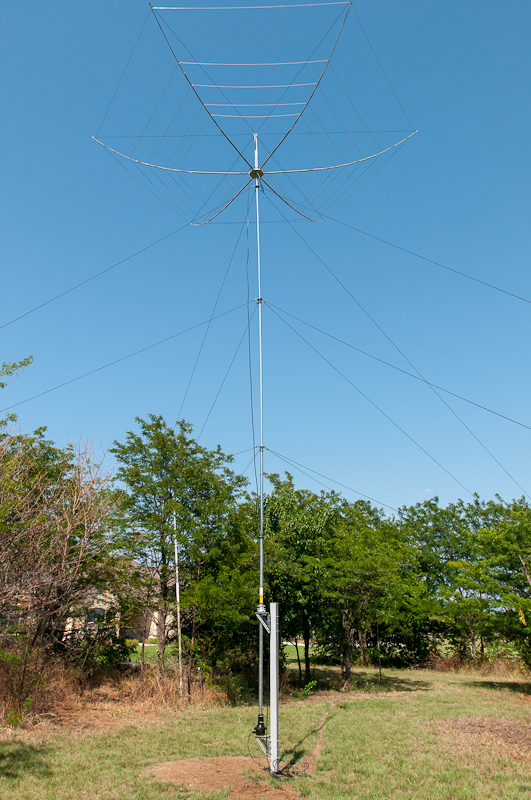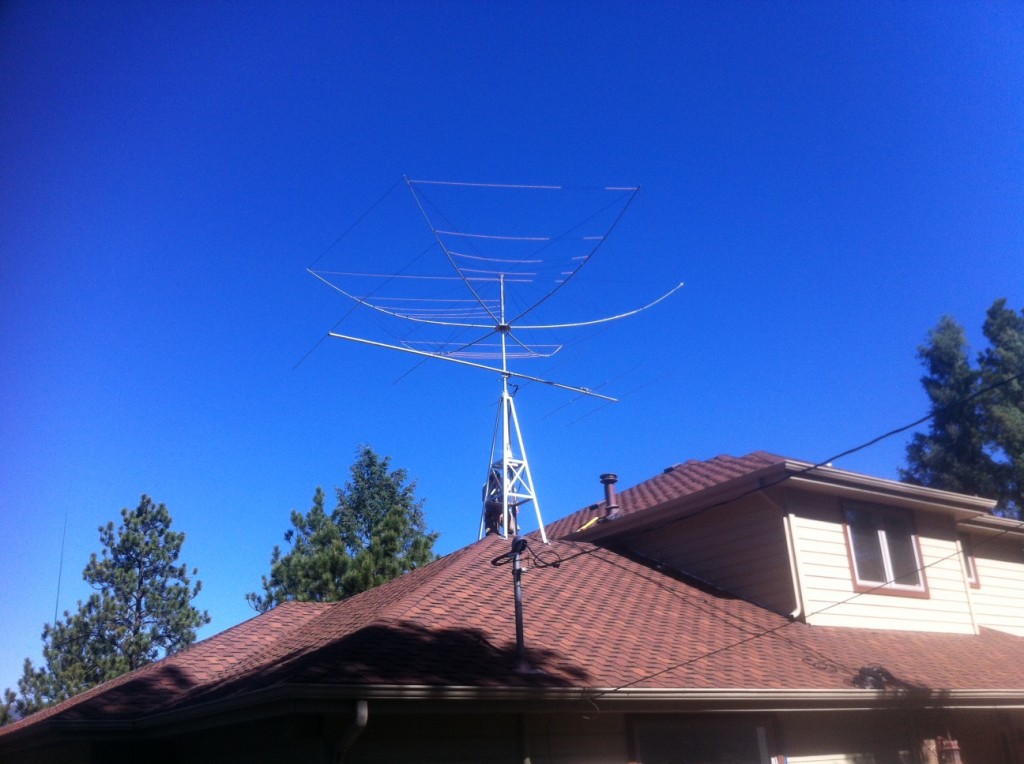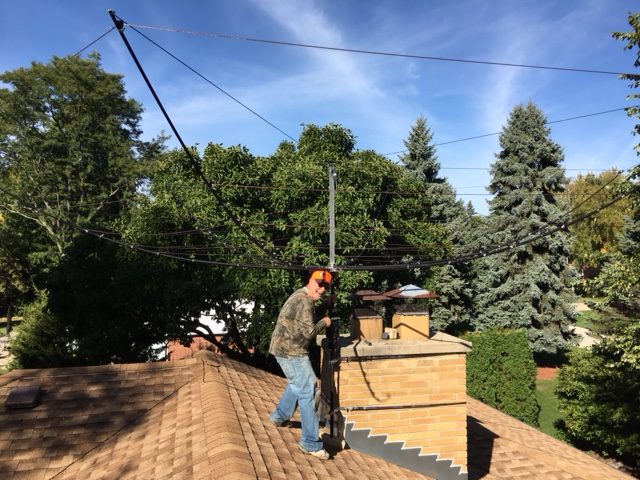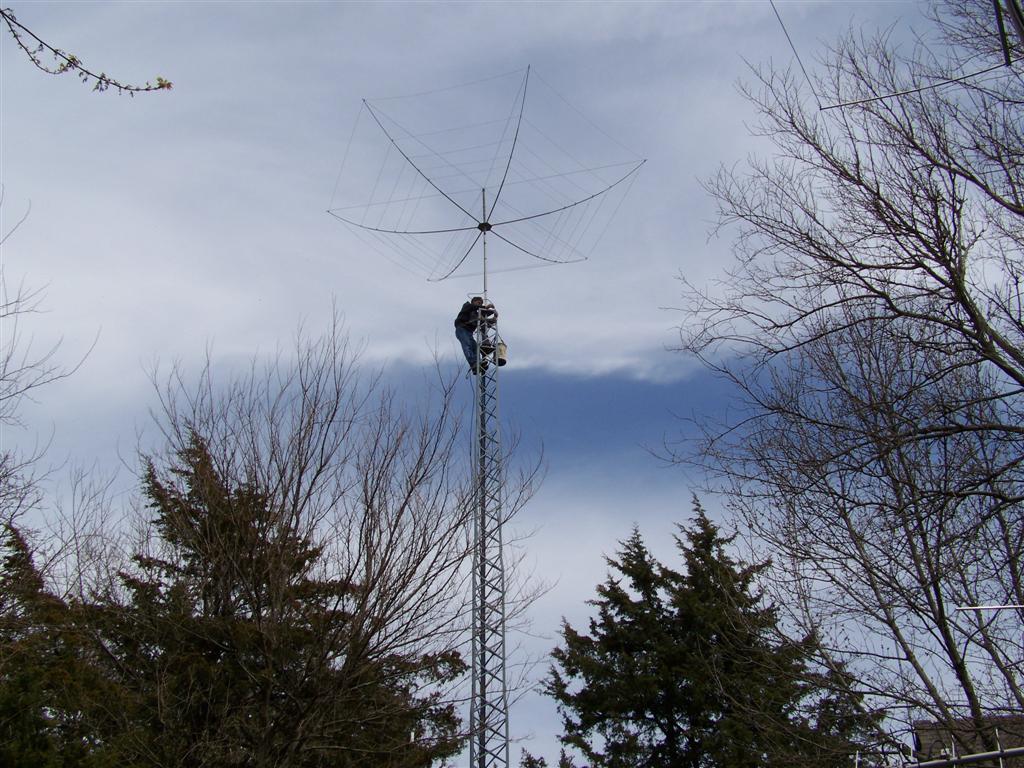
Many new hex owners excitedly report working DX when they hooked up their radio to the hexbeam still on the picnic table where it was first assembled.
That’s great but still, getting it as high as possible is going to give much better results. The higher, the better for a hex as well as any horizontal antenna.
When you compare the improvement in performance with increased height, it seems that in most cases 40 feet is an optimal sweet spot. Yes, higher would be better but the cost starts going up faster than performance when you get in the range of 40 feet.
One of the biggest advantages of a hex beam is that you can get it up to a decent height without the investment of several thousand bucks for a full scale tower with the big concrete footings they normally require. That makes it feasible for you to hang onto your retirement savings and still compete with the big guys with their SteppIR and huge Moseley beams.
So what are the choices for a hex beam mast? Creativity will give you choices all over the map and you can see the diversity of them in our gallery. But there seem to be several general choices for the hexbeam mast and here they are:

Steel push up mast
These sell for just north of $100, require some guying, a thrust bearing and other simple hardware and, of course, a rotator. The best arrangement is to locate the rotator at the bottom and rotate the mast as well as the hex beam. The steel push up masts have floating guy rings that make this possible. Don’t be led into the notion of fiberglass or aluminum masts unless you have a military surplus find. They just aren’t strong enough. Channel master sells steel masts; so does Rohn. You can find a good source for these and other mast hardware at places on line like 3starinc.com. Shipping by freight is costly so Rohn offers a UPS shippable size using 8 ft sections.

Roof top mast
W8IO and others have selections of small towers for mounting on your roof. If you don’t have a wife, this could be a good choice; if you do, maybe you will have to factor in the cost of a bribe. The second concern is to be sure you pay attention to the manufacturer’s admonitions about properly bracing beneath the roof decking and sealing against leaks.

Chimney mast
What about using the chimney to support a mast? If you want to consider this, be aware that even a brick chimney is not necessarily all that strong. The brick is a façade and unless you are confident of the structure behind the bricks, I would be cautious about mounting a hex beam mast against it. A TV antenna is fine but a hexbeam is in a different category from a weight and wind load standpoint.

Conventional tower
If you already have a tower or got one from a fellow ham and don’t mind the issue of digging the hole, the rebar and concrete, there is not a thing wrong with using a conventional tower. They probably are a better choice than the other choices above but usually cost a lot more. (Get someone else to climb this thing.)
Rotators
So which rotator do I need? Anything larger than the TV rotators will work fine. Yaesu has a model G 450A which works great. The High Gain AR-40 is another. Some use the TV rotators but they are marginal and the control box is not that nice.
Dealing with this mast issue is probably your biggest challenge so spend some time studying on it and don’t be discouraged. There is hardly any situation that can’t be overcome with some careful thought and planning. Again, check out our gallery for ideas and inspiration.
 KIO Technology
KIO Technology
